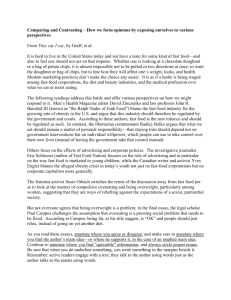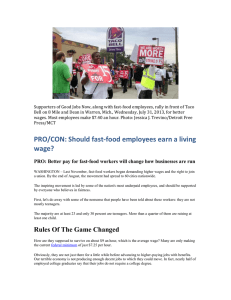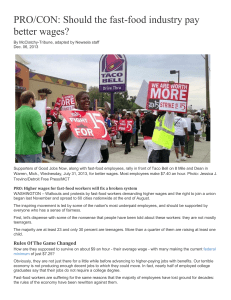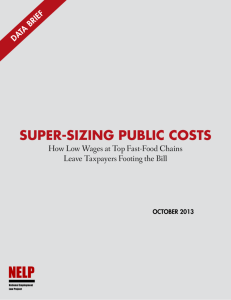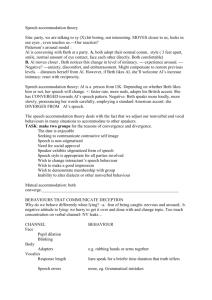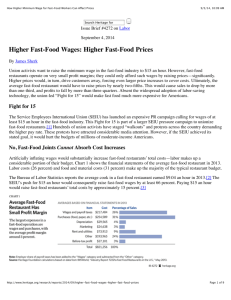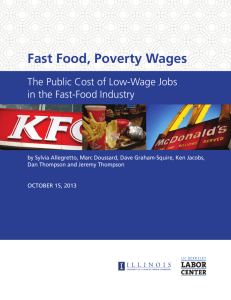Slow Progress for Fast-Food Workers
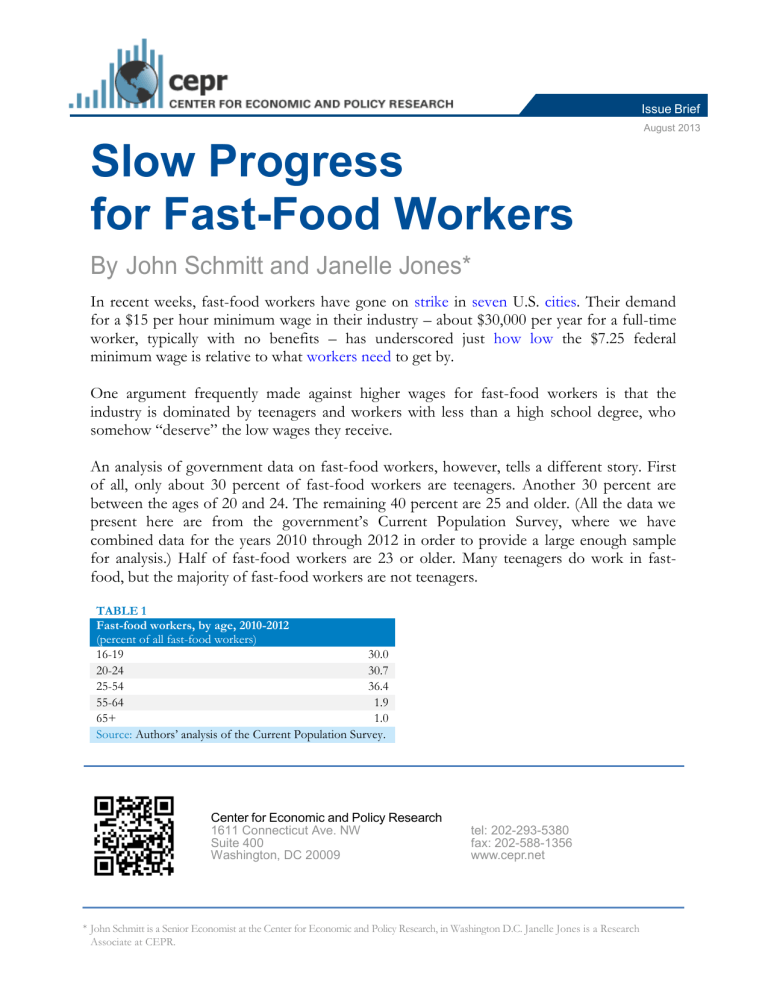
Issue Brief
August 2013
Slow Progress for Fast-Food Workers
By John Schmitt and Janelle Jones*
In recent weeks, fast-food workers have gone on strike in seven U.S. cities . Their demand for a $15 per hour minimum wage in their industry – about $30,000 per year for a full-time worker, typically with no benefits – has underscored just how low the $7.25 federal minimum wage is relative to what workers need to get by.
One argument frequently made against higher wages for fast-food workers is that the industry is dominated by teenagers and workers with less than a high school degree, who somehow “deserve” the low wages they receive.
An analysis of government data on fast-food workers, however, tells a different story. First of all, only about 30 percent of fast-food workers are teenagers. Another 30 percent are between the ages of 20 and 24. The remaining 40 percent are 25 and older. (All the data we present here are from the government’s Current Population Survey, where we have combined data for the years 2010 through 2012 in order to provide a large enough sample for analysis.) Half of fast-food workers are 23 or older. Many teenagers do work in fastfood, but the majority of fast-food workers are not teenagers.
TABLE 1
Fast-food workers, by age, 2010-2012
(percent of all fast-food workers)
16-19 30.0
20-24
25-54
55-64
65+
30.7
36.4
1.9
1.0
Source: Authors’ analysis of the Current Population Survey.
Center for Economic and Policy Research
1611 Connecticut Ave. NW
Suite 400
Washington, DC 20009 tel: 202-293-5380 fax: 202-588-1356 www.cepr.net
John Schmitt is a Senior Economist at the Center for Economic and Policy Research, in Washington D.C. Janelle Jones is a Research
Associate at CEPR.
Issue Brief
August 2013
Given the age structure of fast-food workers, it shouldn’t be surprising that the same government data show that more than one fourth are raising at least one child. Among those age 20 and older, more than one third are raising children.
Over 70 percent of all fast-food workers have at least a high school degree and more than 30 percent have had at least some college education. If we limit the analysis to the 70 percent of fast-food workers that are not teenagers, the educational outcomes are even better: almost
85 percent have a high school degree or more and over one-third have spent at least some time in college (including about 6 percent who have earned a college diploma).
TABLE 2
Characteristics of fast-food workers, 2010-2012
(percent of all fast-food-workers)
Age 16+ Age 20+
(a) Gender
Female
Male
52.6
47.4
56.5
43.5
(b) Education
Less than High School
High School
Some College
College or more
27.7
41.3
26.7
4.4
15.9
46.5
31.4
6.2
(c) Race/ethnicity
White
Black
Latino
Asian
Other
(d) Place of birth
United States
Foreign country
(e) Has child
59.0
16.3
18.4
4.1
2.1
87.9
12.1
26.6
56.2
17.5
19.9
4.4
2.0
84.6
15.4
36.4
Source: Authors’ analysis of the Current Population Survey.
Despite the age structure and the educational attainment of fast-food workers, their wages are very low, even by today’s depressed standards. If we look at straight wages – that is, excluding overtime, tips, bonuses, and commissions, all of which are rare in the fast-food industry – about 13 percent make at or below 1 the federal minimum wage (the first column in the table below). About 70 percent of fast-food workers fall in the range between the
Slow Progress for Fast-Food Workers 2
Issue Brief
August 2013 current $7.25 federal minimum wage and the $10.10 level proposed in legislation sponsored by Senator Tom Harkin and Representative George Miller. Less than 10 percent earn between $10.10 and $12.00 per hour; and fewer than one-in-twelve make more than $12 per hour.
TABLE 3
Wage distribution of fast-food workers, 2010-2012
(percent of all fast-food-workers)
Age 16+ Age 20+
$7.25 or less
$7.26-$10.09
$10.10-$11.99
13.2
70.4
8.7
11.1
68.0
10.5
$12.00+ 7.8 10.5
Source: Authors’ analysis of the Current Population Survey.
The wage structure for non-teenagers in the industry is almost identical to the overall distribution (the second column in the table above). Older workers in fast-food have little to show for their additional education, age, and experience.
The majority (53 percent) of workers in fast-food are adults (21 and older) with a high school degree or more, which you would never guess from the way the industry pays.
1 Workers can earn below the minimum wage for several reasons. First, the federal minimum wage allows for a small number of exemptions, particularly for very small firms. Second, employers may not be complying with the law. Third, workers may round their pay to $7.00 per hour, for example, instead of reporting that they earn the federal minimum wage of $7.25 per hour. Finally, workers may also misreport their earnings in other ways, including reporting their wages net of taxes.
Slow Progress for Fast-Food Workers 3
